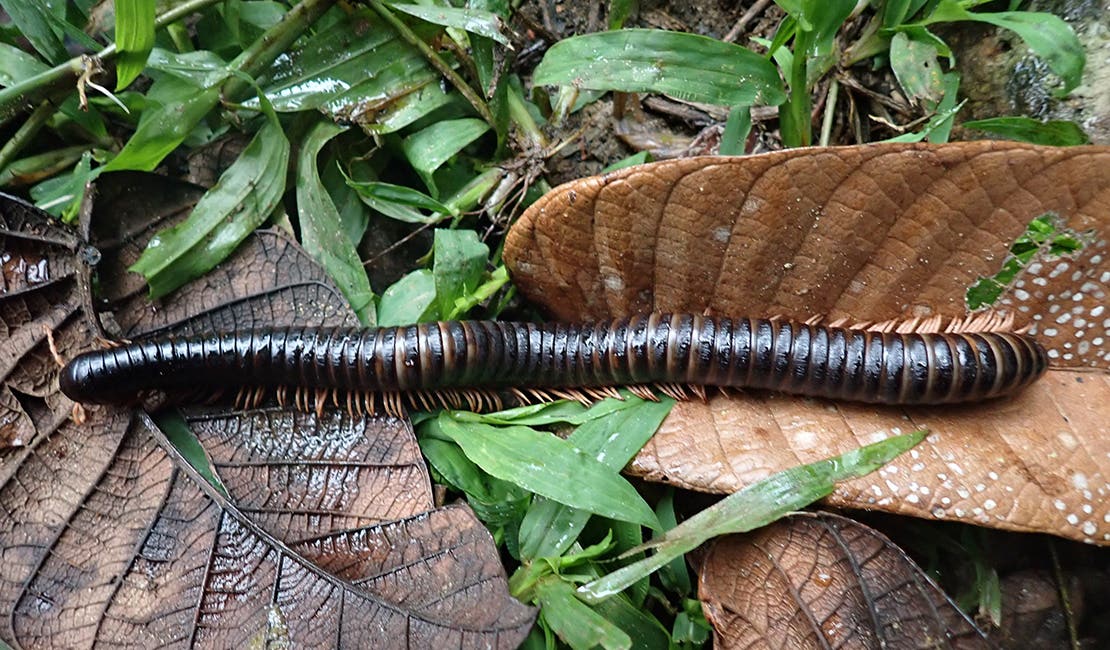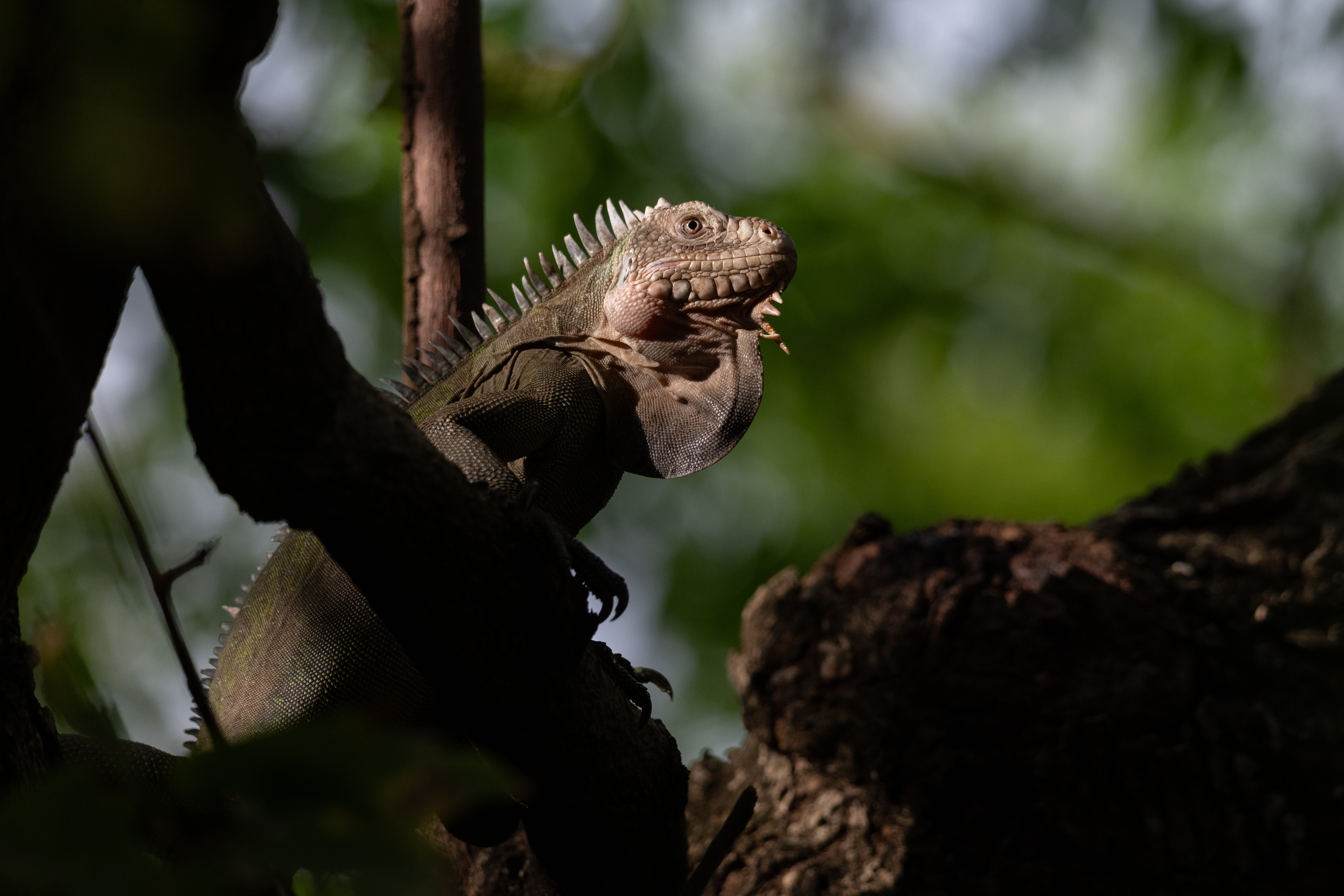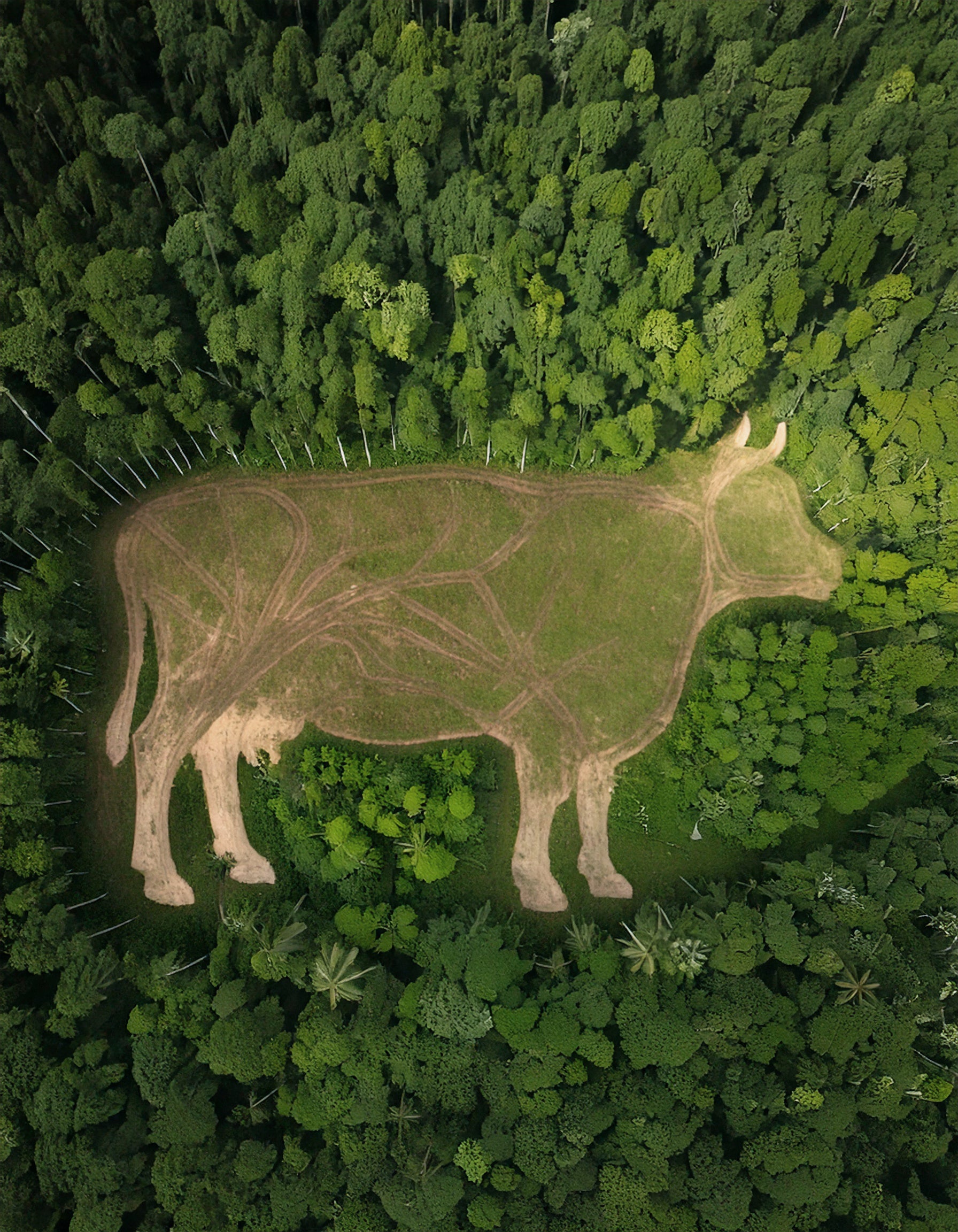An expedition to Makira, the largest and most intact forest in Madagascar, found 21 species that had been lost to science, including three iridescent and nearly translucent species of fish and a millipede that scientists realized after the expedition had not had a documented sighting in 126 years, though it has likely never been lost to local communities.
The expedition was part of Re:wild’s Search for Lost Species, and also included teams from Antananarivo University, American Bird Conservancy, The Peregrine Fund, Wildlife Conservation Society and Biodiversity Inventory for Conservation (BINCO), as well as local guides. It was the first multi-taxa expedition by the Search for Lost Species. Different specialized team members were searching for mammals, fish, birds, reptiles, amphibians and invertebrates that have not had a documented sighting in at least a decade or more, but are not assessed as extinct by the IUCN Red List of Threatened Species. The full team, which numbered more than 30 people, searched Makira for several weeks in September 2023 and spent several months analyzing their results.
“In the past the Search for Lost Species has primarily looked for one or two species on each expedition, but there are now 4,300 species that we know of around the world that have not been documented in a decade or more,” said Christina Biggs, lost species officer for Re:wild, whose eDNA work during the expedition detected 37 additional vertebrate species that the taxonomic experts didn’t sight. “Madagascar is a biodiversity hotspot and Makira is an underexplored area within the country, so we decided to pilot a new model for lost species searches there. We convened a group of scientists to search for as many species as possible, and it proved successful.”
The expedition team initially had a list of 30 lost species they were hoping to find in Makira. The species on the list included three mammals, three fish, seven reptiles, 12 insects and five spiders. With the help of local guides and fishers, the team found the three fish species on the list: the Makira rainbow fish (Bedotia alveyi), lost since 2003, Rheocles sp., lost since 2006, and Ptychochromis makira, lost since 2003. It proved to be much more difficult than biologists anticipated to find the lost fishes.
“When we didn’t find anything during the first five days of the expedition it was very frustrating,” said Tsilavina Ravelomanana, fish biologist at Antananarivo University, who had been to Makira 20 years earlier to survey freshwater fish. “We sampled a small tributary of the Antainambalana River, then the main river, then upstream and then downstream, but we still didn’t find any fish. We changed our strategy and sent our local guides on a two-to-three-day hike away from our base camp to interview local fishermen.”
Two of the expedition’s local guides, Melixon and Edmé, hiked around a steep waterfall and over mountains to villages that were within a few days' walk of the expedition’s base camp along the Antainambalana River. After several days, the guides were able to find a Makira rainbow fish, a common fish to local communities, and brought it back to the camp in a bucket of water. They returned to the same villages a few days later with photos of the Rheocles sp., which only measures a few inches long and has iridescent scales and red highlights on its body at the tips of its fins. Again, working with local fishermen, Melixon and Edmé were able to find the fish.
“We had already got two species, but we still needed to find one more,” said Fetra Andriambelomanana, a fish biologist at Antananarivo University. “The guides told us that they thought the best place to find it would be in an area on our hike back out of the forest. They left ahead of us and we made plans to meet them when we left Makira.”
The guides were able to find Ptychoromis makira, which biologists think may only live in one small area near Andaparaty, and is a rare species — even to local communities.
Makira proved to be home to several lost species of insects including bugs and some that were not even on the initial list of lost species for the area. Entomologists found two different species of ant-like flower beetles that had been lost to science since 1958. However, the most unexpected rediscovered lost species was a giant, dark brown millipede.
“I personally was most surprised and pleased by the fact that the giant millipede Spirostreptus sculptus, not uncommon in Makira Forest, appeared to be another lost species known only from the type specimen described in 1897,” said Dmitry Telnov, an entomologist with BINCO on the expedition team. “The longest specimen of this species we observed in Makira was a really gigantic female measuring 27.5 centimeters [10.8 inches] long.”
The expedition team also found a variety of spider species in Makira, including five jumping spiders that were lost to science and 17 spiders that are new to science. The longest-lost spider was the jumping spider Tomocyrba decollata, which had not had a documented sighting since 1900, when it was first described by science.
The most unexpected discovery was a new species of zebra spider. Zebra spiders were not thought to live in the rainforests of Madagascar before the expedition to Makira. One evening a hanging egg sac in the entrance of a small cave caught the eye of one of the team members.
“I immediately recognized them as something special,” said Brogan Pett, director of the SpiDiverse working group at BINCO and doctoral candidate at the University of Exeter. “Pendulous egg sacs is one of the characteristics of the family of zebra spiders this new species belongs to. I crawled a short way inside the cave and saw a few adult spiders guarding egg sacs—they were quite large spiders and it was remarkable that they had gone unrecognized for so long.”
Although the expedition found nearly two dozen lost species, there were several that the expedition team was unable to find including the Masoala fork-marked lemur; a large chameleon, Calumma vatososa, named after Malagasy ‘vato’ or stone and ‘soa’ or beautiful; and the recently rediscovered dusky tetraka. The lemur has not had a documented sighting since 2004 and the chameleon since 2006. As a result of this expedition, local scientists were able to clarify the uncertain taxonomic status of the Ellerman’s tuft-tailed rat and the Malagasy slit-faced bat, allowing them to be removed from the list of more than 4,300 lost species maintained by Re:wild and the IUCN Species Survival Commission.
The dusky tetraka was rediscovered by the Search for Lost Birds in Madagascar in December 2022 and January 2023 in two different locations in Andapa and Masoala. Makira is between Andapa and Masoala and ornithologists were hoping to determine if the species also lives in Makira. They were unable to find any of the cryptic olive and yellow birds during the expedition, but they are not ready to rule out the forest as a habitat for the species yet.
“The Makira Forest has the potential for two rare bird species, the dusky tetraka and the Madagascar serpent eagle, but we were not able to find them this time,” said Lily Arison Rene de Roland, Madagascar program director for the Peregrine Fund. “I was surprised by the abundance of white-browed owl. In general this species is very localized and not very abundant, but it was very common in Makira.”
Though Makira is the largest forest in Madagascar it is still facing pressure from agriculture. The expedition team worries that species in the underexplored forest could face steep population declines before scientists have an opportunity to study them.
Below is a full list of lost species the expedition team has confirmed as rediscovered since returning from the expedition:
Spirostreptus sculptus, (millipede) lost since 1897
Tomocyrba decollata Simon, (jumping spider) lost since 1900
Echinussa vibrabunda, (spider) lost since 1901
Tetragonoderus tomasinae, (beetle) lost since 1931
Omophron amandae, (beetle) lost since 1948
Sapintus acuminatus, (ant-like flower beetle) lost since 1958
Spaintus mediodilatatus, (ant-like flower beetle) lost since 1958
Pandisus sp. (spider) lost since 1968
Myrmarachne eumenes, (jumping spider) lost since 1978
Pandisus parvulus Wanless, (jumping spider) lost since 1980
Nethinius longipennis, (beetle) lost since 1980
Goleba punctata, (jumping spider)lost since 1980
Makira rainbow fish (Bedotia alveyi), lost since 2003
Ptychochromis makira, (fish) lost since 2003
Rheocles sp., (fish) lost since 2006
Kaliella crandalli, (snail) lost since 2010
Oxypristis conspicuous, (leaf-footed bug) lost since 1996
Hypaspistes bouvieri, (ant-like flower beetle)
Zetophloeus pugionatus, (straight-snouted weevil) lost since 2010
Cenoscelis cistelina, (darkling beetle) lost since 2011
Tamatasida tuberculosa tuberculosa, (darkling beetle) lost since 1949
The Search for Lost Species’ expedition to Makira was supported by the Ridges Foundation.
###
Photo: A species of giant millipede (Spirostreptus sculptus) in Makira Forest that had not been documented by scientists since 1897, though it has likely never been lost to local communities. (Photo by Dmitry Telnov)
Additional quotes
Cosmo LeBreton, University of Oxford, The RIDGES Foundation “This expedition is an extremely important example of the impact that output-driven research expeditions can generate in global hotspots for biodiversity, like Madagascar. The RIDGES Foundation was delighted to be able to work with our partners Re:wild, the American Bird Conservancy and the Peregrine Fund on a project that brought together the expertise of 18 taxonomists with international and local partners, and documented more than 175 vertebrates and dozens more invertebrates—some of which were new to science and others that were lost to science.”
Julie Linchant, WCS Madagascar “It’s important to continue researching the biodiversity of Makira because although it is one of the largest rainforests in the country we still have relatively little idea which species occur, and there are likely to be many completely undescribed species as well. Having a better understanding of the biological riches of Makira will enable us to better target our protection efforts. The expedition was a valuable opportunity for our team to visit places where we rarely go, and to gain a deeper understanding of the different challenges faced in remote parts of the park. We are particularly pleased that we were able to rediscover the lost fish species, but it was a concern that we couldn’t locate the poorly know Phaner (fork-marked lemur) species that has been recorded in the past, and we hope that we can find it in a different part of the park or in a different season.”
James Rafanoharana, WCS Madagascar “It was the first time a herpetologysurvey was done at that low altitude and it was surprisingly diverse—although we mostly found common species. It would be interesting to reproduce that survey at different sites to investigate more.”
Armannd Benjara, ornithologist, The Peregrine Fund Madagascar Project and site manager of the Complexe Tsimembo Manabolomaty Protected Area “Given the forest microhabitats we observed in Sahamatreha, such as dense vegetation near streams and rocky watercourses, I hope we can find the dusky tetraka in the Makira Forest. I would like to return, especially during the breeding season of Madagascar’s forest birds.”
Angelinah Rene de Roland, herpetologist, The Peregrine Fund “The expedition in general was amazing the Makira Forest is very humid even during the dry season. It is home to a variety of ecosystems, such as dense rainforest, marsh and streams. This was the first time I've observed several individuals of the brown-leafed chameleon (Brookesia supercialiaris) and graceful Madagascar ground gecko (Paroedura gracilis) in one location. It is important to study the reptile and amphibian species in Makira, as most of these species are classified as endangered on the IUCN Red List of Threatened Species, and are also local endemics of the rainforest of eastern and northern Madagascar.”
John C. Mittermeier, director of the search for lost birds, American Bird Conservancy “The dusky tetraka is a really enigmatic species. After finding it in 2022, we had a good idea of what habitat to look for and what the bird sounds like, but we still weren’t able to find it again. So, the plot thickens. There’s definitely more to discover about this unique bird and it’s surprising and potentially concerning that we weren’t able to find it in Makira.”
Merlijn Jocque, BINCO “Effective conservation and protection efforts begin with understanding which species are present and where they are located. This is the core mission of BINCO NPO, with a focus on lesser-studied taxa—mainly invertebrate groups—and isolated areas like Makira. Because every species counts! Often, this critical information is lacking, making it difficult to prioritize and implement effective conservation actions within limited resources.
Tahiry Langrand, University of Oxford “Makira is difficult to access and the limited availability of researchers to consistently conduct species surveys means that there are many taxonomic knowledge gaps on the species that live in Makira. Knowledge on the species that exist in Makira is useful to assess their conservation status and extinction threats. These knowledge gaps also include the discovery of new species, rediscovery of lost species, and knowledge on the geographical distribution of populations of known species. Surveying species in Makira informs conservation for the region, and allows people to document changes over time and make better management decisions.”
Re:wild Re:wild protects and restores the wild. We have a singular and powerful focus: the wild as the most effective solution to the interconnected climate, biodiversity and human wellbeing crises. Founded by a group of renowned conservation scientists together with Leonardo DiCaprio, Re:wild is a force multiplier that brings together Indigenous peoples, local communities, influential leaders, nongovernmental organizations, governments, companies and the public to protect and rewild at the scale and speed we need. Learn more at rewild.org.
The Peregrine Fund Madagascar project started in 1990 and mainly focused on the Madagascar Fish Eagle population Haliaeetusvociferoides. Current purposes are to conserve endemic threatened species and their habitats including birds of prey, Waterbirds and other taxa. The project also strengthens local capacity on biodiversity conservation by the mean of staff, students and locals’ trainings. Four protected areas are currently managed by TPF in Madagascar and cover 500,000 acres total area of preserved ecosystems.
The Peregrine Fund The Peregrine Fund was founded in 1970 to restore the then Endangered Peregrine Falcon, which was subsequently removed from the U.S. Endangered Species List in 1999. That success encouraged the organization to expand its focus and apply its experience and understanding to raptor conservation efforts on behalf of 140 species in 66 countries. The mission of The Peregrine Fund is to conserve birds of prey worldwide.
Wildlife Conservation Society WCS combines the power of its zoos and an aquarium in New York City and a Global Conservation Program in more than 50 countries to achieve its mission to save wildlife and wild places. WCS runs the world’s largest conservation field program, protecting more than 50 percent of Earth’s known biodiversity; in partnership with governments, Indigenous People, Local Communities, and the private sector. Its four zoos and aquarium (the Bronx Zoo, Central Park Zoo, Queens Zoo, Prospect Park Zoo, and the New York Aquarium) welcome more than 3.5 million visitors each year, inspiring generations to care for nature. Visit: newsroom.wcs.org. Follow: @WCSNewsroom. For more information: +1 (347) 840-1242. Listen to the WCS Wild Audio podcast HERE.
American Bird Conservancy ABC is a nonprofit organization dedicated to conserving wild birds and their habitats throughout the Americas. With an emphasis on achieving results and working in partnership, we take on the greatest problems facing birds today, innovating and building on rapid advancements in science to halt extinctions, protect habitats, eliminate threats, and build capacity for bird conservation. Find us on abcbirds.org, Facebook,Instagram, and Twitter (@ABCbirds).
RIDGES Foundation The RIDGES Foundation is a conservation organisation based in the UK that funds and executes the Research of Insular, Divergent & Endangered Species (RIDGES). Our expeditions to remote islands have discovered 21 new species, and rediscovered 25 lost species including the Black-Naped Pheasant Pigeon. For more information:https://www.ridgesfoundation.org/
Biodiversity Inventory for Conservation (BINCO) NPO BINCO, is a consortium of both young and seasoned field biologists and scientists that focuses on biodiversity assessment and monitoring, promoting standardized protocols to validate data beyond local scales. They specialize in Biodiversity Express Surveys (BES) in poorly studied, highly threatened, and ecologically interesting areas to document biodiversity without geographic limitations. BINCO advises stakeholders on designing, developing, and analyzing monitoring programs, estimating population sizes of threatened species, and developing regional red lists. They emphasize free and unhindered availability of biodiversity data, publishing results in peer-reviewed journals and relevant databases. Through education, capacity building, and raising awareness, BINCO fosters collaboration and knowledge transfer among stakeholders to enhance biodiversity conservation efforts. www.binco.eu, info@binco.eu

Devin Murphy
Writer
Devin Murphy is Re:wilds’s senior communications specialist and helps Re:wild and its partners tell stories about the work they do to protect wildlife and wildlands around the planet. Her favorite stories about conservation include fascinating and little-known species and the dedicated humans protecting them.




